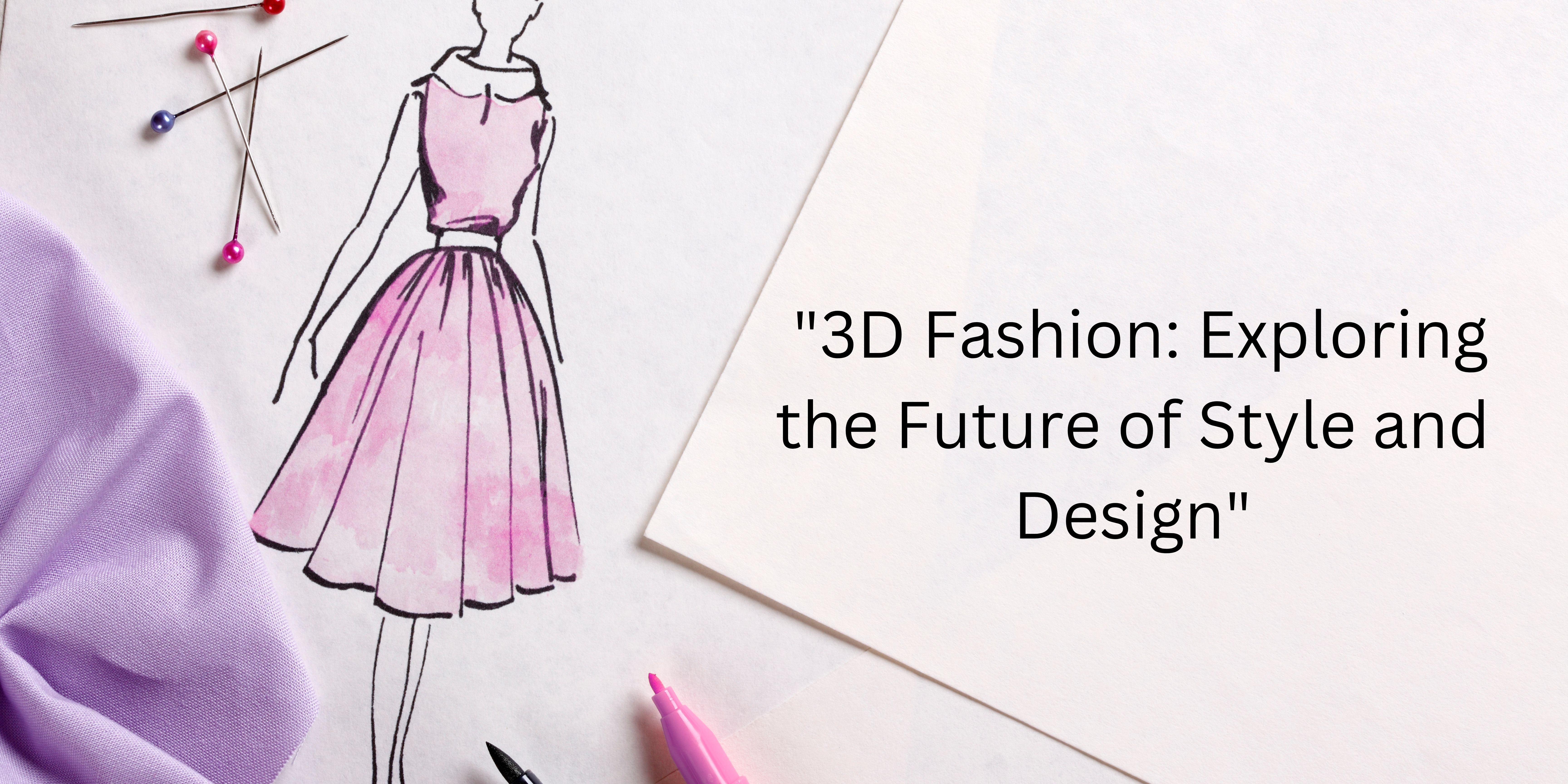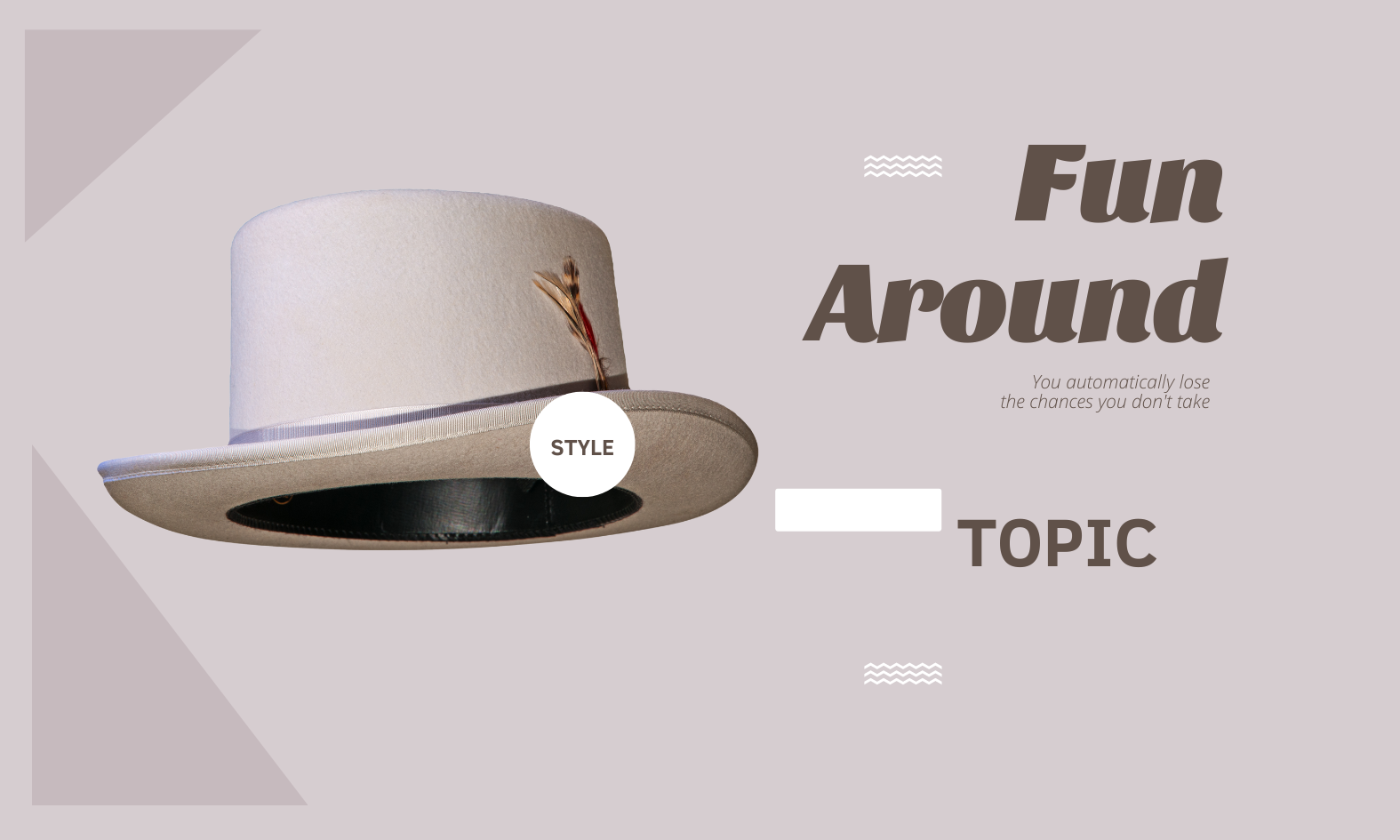
3D Fashion: Exploring the Future of Style and Design
3D Fashion: Exploring the Future of Style and Design
Introduction: Fashion design has always been a dynamic field, constantly evolving with the times. Today, technology is revolutionizing the way designers create and consumers experience fashion, with 3D design software at the forefront of this transformation. In this blog, we will explore the fascinating world of 3D fashion design, delving into its history, benefits, current applications in the industry, and its potential to shape the future of fashion.
Section 1: A Brief History of 3D Fashion Design The journey of 3D fashion design began in the 1990s, when early adopters in the fashion industry started experimenting with digital design tools. Over the years, advancements in software technology led to the development of sophisticated 3D design programs, enabling designers to create virtual garments with incredible detail. The introduction of 3D printing in the 2000s further pushed the boundaries, making it possible to produce physical garments directly from digital models. Key milestones include the development of programs like CLO 3D and the first 3D printed dress, which showcased the immense potential of this technology in fashion.
Section 2: Benefits of 3D Fashion Design 3D fashion design offers numerous advantages over traditional design methods:
- Efficiency and Speed: Designers can create and iterate on designs much faster in a virtual environment, reducing the time from concept to final product.
- Sustainability: By allowing designers to visualize and test designs digitally, 3D fashion reduces the need for physical prototypes, significantly cutting down on fabric waste.
- Customization: 3D design tools enable precise customization, allowing garments to be tailored to individual measurements, leading to better fit and higher customer satisfaction.
- Cost-Effectiveness: The ability to prototype and visualize products digitally reduces the costs associated with traditional sample making and fabric waste.
Section 3: 3D Fashion Design in the Fashion Industry 3D fashion design is making waves across the fashion industry, from high-end brands to fast fashion. Some key applications include:
- Garment Prototyping: 3D design tools allow for the creation of virtual prototypes, enabling designers to tweak and perfect their designs before any fabric is cut.
- Virtual Runway Shows: The fashion industry is increasingly using 3D models for virtual runway shows, allowing for more creative freedom and a broader audience reach.
- Product Visualization: Brands use 3D renders to showcase their products online, offering customers a realistic view of garments before they make a purchase. Major brands like Balenciaga and Gucci have integrated 3D design into their production processes, setting new industry standards.
Section 4: The Future of 3D Fashion Design The future of 3D fashion design is full of exciting possibilities:
- Advancements in Realism: As technology continues to evolve, 3D designs are becoming increasingly realistic, blurring the lines between virtual and physical garments.
- Accessibility of 3D Printing: As 3D printing technology becomes more accessible and affordable, it’s likely that we’ll see an increase in custom, on-demand fashion production.
- Sustainability: 3D fashion design has the potential to drastically reduce the environmental impact of the fashion industry by minimizing waste and optimizing production processes.
Section 5: The Challenges of 3D Fashion Design While promising, 3D fashion design does come with its challenges:
- Learning Curve: Mastering 3D design software requires time and specialized training, which can be a barrier for some designers.
- Specialized Equipment: Access to the necessary technology, such as 3D printers and powerful computers, can be costly.
- Integration with Traditional Processes: Incorporating 3D design into existing production workflows can be complex, requiring changes in manufacturing practices.
Section 6: Tips for Getting Started with 3D Fashion Design For those interested in diving into 3D fashion design, here are some tips:
- Choose the Right Software: Start with user-friendly programs like CLO 3D, Marvelous Designer, or TUKAcad, which are great for beginners.
- Educational Resources: Utilize online tutorials, courses, and forums to learn the basics of 3D design and gradually advance your skills.
- Practice and Experiment: Don’t be afraid to experiment with different techniques and materials in the virtual space before moving on to physical prototypes.
Section 7: 3D Fashion Design and Sustainability 3D fashion design has significant potential to promote sustainability:
- Reducing Waste: By allowing for digital prototyping, 3D design minimizes the need for physical samples, cutting down on fabric waste.
- Efficient Supply Chains: Digital designs can be shared instantly with manufacturers, speeding up production and reducing the carbon footprint associated with shipping samples.
- Sustainable Production: 3D printing can enable on-demand production, reducing overproduction and excess inventory.
Section 8: 3D Fashion Design and Consumer Behavior 3D fashion design is also changing how consumers interact with fashion:
- Personalization: 3D design tools allow consumers to personalize garments, choosing colors, patterns, and fits that suit their individual style.
- Virtual Try-Ons: Advances in 3D technology enable virtual try-ons, allowing consumers to see how clothes will fit and look on their bodies before making a purchase, reducing returns and increasing customer satisfaction.
Conclusion: The integration of 3D technology in fashion design is reshaping the industry, offering new levels of creativity, efficiency, and sustainability. As 3D fashion design continues to evolve, it will undoubtedly play a central role in the future of fashion. Whether you’re a designer looking to innovate or a consumer eager to explore new possibilities, the world of 3D fashion is one of endless opportunities. Join us in embracing this exciting frontier and creating the fashion of tomorrow.












